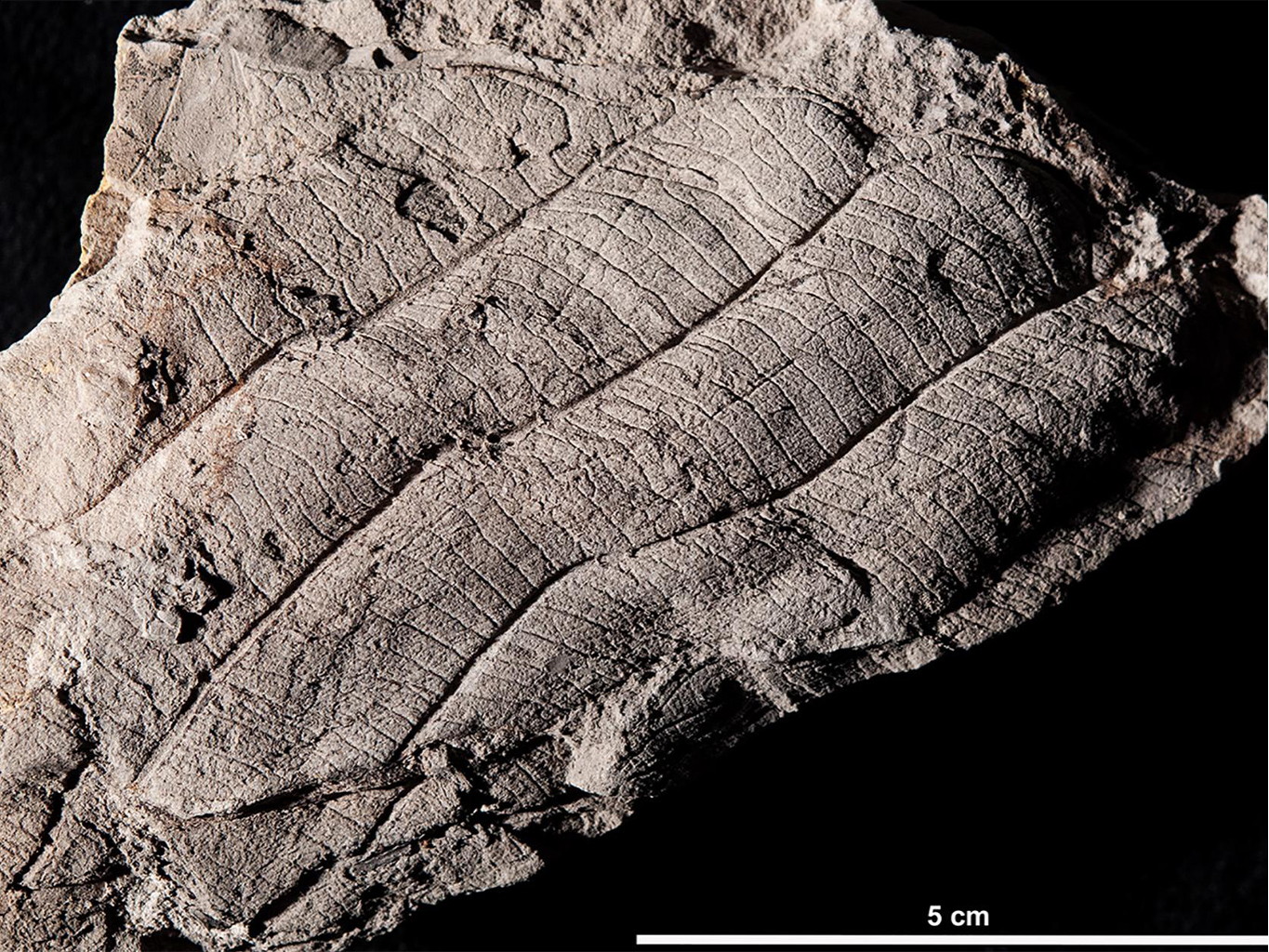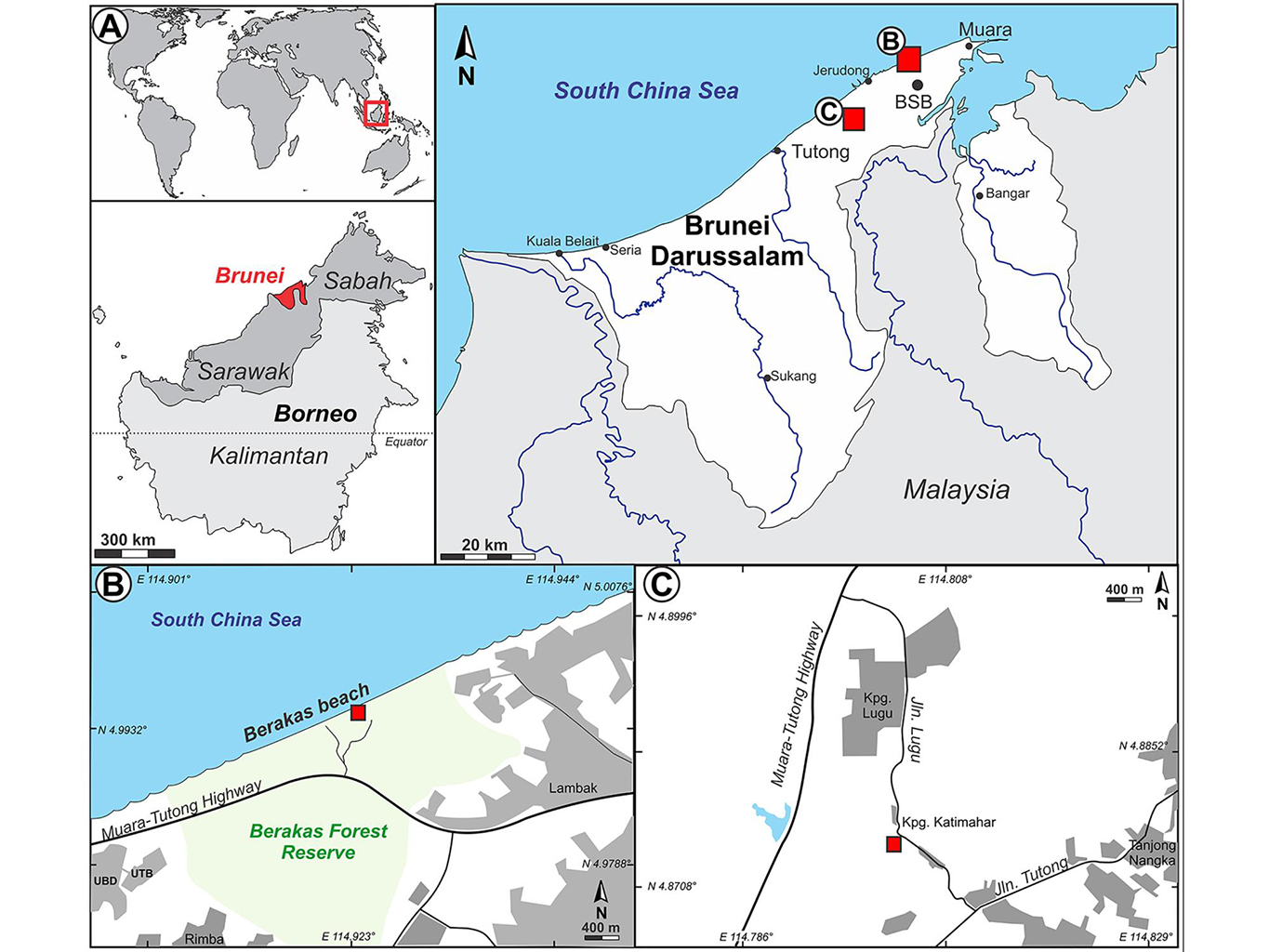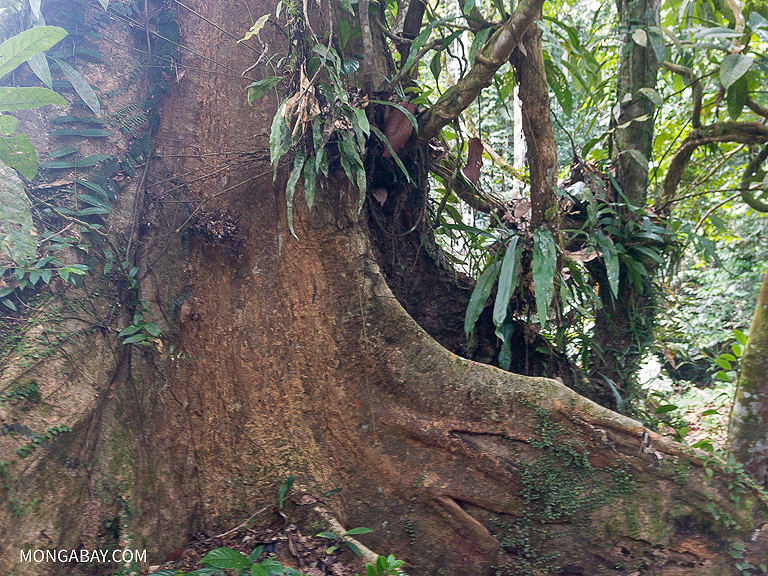- A recent study published in the journal PeerJ reports the excavation of fossilized leaves from ancient forests at least 4 million years old in Brunei on the island of Borneo.
- More than 80% of the leaves the team found were from the Dipterocarpaceae family, trees that remain dominant today, confirming their long-standing role in anchoring Borneo’s species-rich ecosystems.
- The discovery adds to the urgency to protect these forests from logging or development for agriculture because once they’re gone, they will be difficult to get back, the authors say.
On a breezeless, sunbaked beach in Borneo, one of the biggest challenges paleobotanist Peter Wilf faced in his team’s hunt for plant fossils was getting used to a new set of tools. The damp soil they were probing for ancient plant detritus had never fully formed into stone, so it crumbled with all but the most delicate touch.
They found they were doing well if they could get a slice 30 centimeters (12 inches) across — nothing like the 2-meter (6.5-foot) hunks of rock Wilf was used to carving out of fossil beds in Argentina. And he had to work with a simple penknife, swapping out the gas-powered drill or even the backhoe that’s part of a paleontologist’s kit in places like the U.S. state of Wyoming.
“You can almost dig the fossils out by hand,” said J.W. Ferry Slik, a botanist at Brunei Darussalam University and one of Wilf’s collaborators.
It wasn’t easy, but the team extracted fossilized leaves and other plant matter from two main sites in Brunei, which sits on the west coast of Borneo. The process to dry them out and carefully pack, permit and ship them in suitcases from Brunei to the U.S. was painstaking, and it took months. But in the end, the evidence the researchers unearthed revealed that the prehistoric forests on the island at least 4 million years ago looked pretty similar to what exists there today.


More than 80% of the leaves they found were from Dipterocarpaceae, a family of giant rainforest trees that anchor the modern-day forests across the island, shared by Brunei, Indonesia and Malaysia.
“This type of forest is ancient, and it’s functioned more or less the same way for a long time,” said Wilf, a professor of geosciences at Pennsylvania State University and a faculty member at the university’s Institutes of Energy and the Environment. Today, this forest type continues to anchor ecosystems across the island that support untold numbers of species.
The team reported their findings March 24 in the journal PeerJ.
“It is a fascinating description of a paleobotanical study that substantiates long-standing assumptions about the ancient nature of Bornean rainforest communities, in their composition and distribution,” Charles Cannon, a botanist and director of the Center for Tree Science at the Morton Arboretum in the U.S., told Mongabay in an email. Cannon (no relation to this article’s author), who wasn’t involved in the study, said he would have liked to have seen the samples more thoroughly identified, but added he was surprised the team was even being able to find plant macrofossils “in these conditions.”
The study illustrates techniques that could further pull back the curtain on this region’s ancient history, said Robert Morley, a geologist with the consultancy Palynova Limited, who wasn’t involved in the research.

“The main benefit of this paper is that it shows to local prospective palaeobotanists how fossil leaf beds can be usefully studied using modern methods,” Morley said in an email.
He noted that scientists have long known about the enduring presence of dipterocarps in this region. Peter Ashton, a professor emeritus in the department of organismic and evolutionary biology at Harvard University, who wasn’t part of the study team, likewise said that evidence of dipterocarps from plant parts and pollen goes back to at least the mid-20th century.
Still, the study does provide further proof of how long these forests and the biodiversity they support have persisted, Cannon said.
Today, Borneo’s mega diverse forests are under threat. Cannon said this is partly due to the natural rise of sea levels since the world’s glaciers began to melt about 10,000 years ago. As seas rose, existing forests dwindled and splintered. Now, logging and agriculture are also leading to the degradation or wholesale evaporation of swaths of Borneo’s venerable forests. As he and his colleagues argue in a 2009 study published in the Proceedings of the National Academy of Sciences, that’s created “a double whammy to the overall process of diversification and adaptation,” Cannon said.
Another recent study, published in Conservation Biology, revealed that much of the land housing critical tree species across Southeast Asia lies unprotected.
Now, this new evidence confirming the age and history of these forests makes their conservation even more urgent.
“If this forest disappears, like is currently happening quite fast, then it’s going to be very difficult to ever get this back,” Slik said.

Relatively tiny Brunei remains an outlier, having set aside forest reserves that cover more than half the country’s land area. But global demand for products like rubber, palm oil and tropical hardwoods has driven deforestation at a blistering pace throughout neighboring Indonesian and Malaysian Borneo.
“There’s a sort of idea that you can cut it down and it’ll grow back,” Wilf said. “But that’s not what we see in Southeast Asia.”
The dwindling of the region’s forests has also increased the urgency to catalog the life they support, as well as to understand how the immense biodiversity of Borneo, rooted in its florid plant life, came to be — an idea that motivated Wilf.
“Even as the fossils are disappearing, we don’t really know enough about the history of these places,” he told Mongabay.
Much of what modern paleobotanists do know about ancient plants comes from ancient pollen. Often tough-hulled and microscopic, these capsules of plant genetic information have a knack for surviving in sediments for millennia. Identification by keen-eyed scientists in the lab then provides an approximation of the makeup of the plants that existed in a given spot millions of years ago.
In the case of dipterocarps, however, their pollen doesn’t seem to hold up as well through the ages — one reason that dipterocarps’ prevalence in these ancient forests hasn’t been as clear until now.

Earlier research often failed to turn up dipterocarp pollen, Wilf said. That led to questions about their place in ancient ecosystems, he said: “Were they abundant? Were they important?”
At their research sites in Brunei, Slik said, periodic flooding in the distant past would have washed over parts of the forest floor with fine clay, essentially preserving leaf deposits more or less as they were at that point in time.
“Leaf deposits are considered to be … almost the closest thing to snapshot deposits,” Wilf said. And in these deposits the team excavated, more than 80% of the leaves were from the dipterocarp family, even as pollen from the family’s trees was harder to find.
“These are keystone species,” Wilf said.
The researchers also turned up leaves from climbing plants likely from the understory, as well as fungi, ferns, and an ancient group of plants called lycophytes that include modern-day clubmosses.
“We start to get this three-dimensional picture of what the forest was based on what we found,” Wilf said. “That’s an exciting part when you can put it all together.”
Wilf said he hopes evidence of these forests’ long history in Brunei and on the island of Borneo more broadly increases awareness of their importance — and the consequences if they’re allowed to disappear.
“You’re going to lose a unique, highly functional Earth system that supports wildlife, supports humanity, supports biodiversity, supports carbon sequestration,” he said. “And the human population will be much poorer for it.”

Banner image: A river running through an old-growth lowland rainforest in Brunei. Image by John Cannon/Mongabay.
John Cannon is a staff features writer with Mongabay. Find him on Twitter: @johnccannon
Citations:
Cannon, C. H., Morley, R. J., & Bush, A. B. (2009). The current refugial rainforests of Sundaland are unrepresentative of their biogeographic past and highly vulnerable to disturbance. Proceedings of the National Academy of Sciences, 106(27), 11188-11193. doi:10.1073/pnas.0809865106
Gaisberger, H., Fremout, T., Kettle, C. J., Vinceti, B., Kemalasari, D., Kanchanarak, T., … Jalonen, R. (2022). Tropical and subtropical Asia’s valued tree species under threat. Conservation Biology, e13873. doi:10.1111/cobi.13873
Wilf, P., Zou, X., Donovan, M. P., Kocsis, L., Briguglio, A., Shaw, D., … Lambiase, J. J. (2022). First fossil-leaf floras from Brunei Darussalam show dipterocarp dominance in Borneo by the Pliocene. PeerJ, 10, e12949. doi:10.7717/peerj.12949
FEEDBACK: Use this form to send a message to the author of this post. If you want to post a public comment, you can do that at the bottom of the page.
